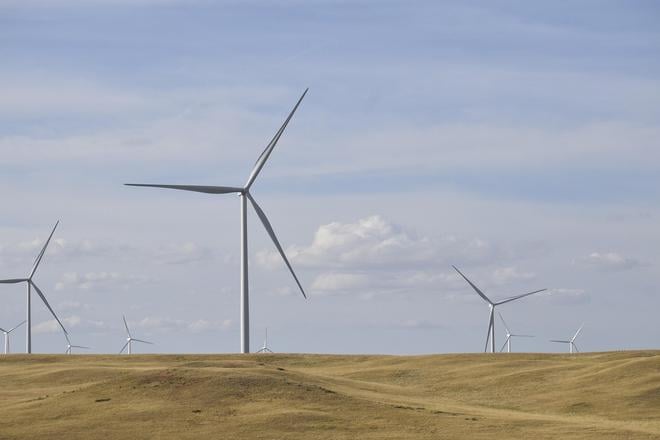A semi-state energy firm has unveiled plans for Slovakia’s largest onshore wind farm near the western town of Hlohovec — triggering anger from local councils who say they were never informed.
Jadrová energetická spoločnosť Slovenska (JESS), which is 51 percent owned by the state through the nuclear-waste operator JAVYS and 49 percent by Czech energy group ČEZ, wants to build 69 turbines across farmland spanning more than 20 municipalities in the Trnava and Nitra Regions, according to Denník N.
The project — titled the Pilot Zone for Wind Energy Development West — would have an installed capacity of 430 megawatts, roughly the output of one nuclear reactor, and an expected operating life of 30 years. Construction is due to begin in autumn 2026 and finish by the end of 2027. Turbine towers would stand 118 to 179 metres high, with blades pushing total height to up to 267 metres.
Hlohovec city hall said it learned of the plan only this week and has already imposed a building moratorium. Mayors of neighbouring villages voiced similar frustration. “We’ll immediately introduce a construction freeze,” said Daniel Tejkal, mayor of Pastuchov, one of the affected communities. “Our country needs wind farms, but they should be built where power is really lacking — not here in western Slovakia next to two nuclear plants.”
According to JESS’s filing, the park would also affect the cadastral areas of 22 other villages, including Rišňovce, Rumanová, Lukáčovce and Veľké Zálužie, several of which would have turbines within close range of homes.
Just a day after news of the Hlohovec site emerged, JESS notified authorities of a second major project: a 315-megawatt wind farm with 45 turbines north-west of the eastern city of Michalovce, spread over 14 municipalities. Local councils there likewise said they had not been consulted, although Michalovce Town Hall later said it viewed the investment positively as part of a move towards renewable energy.
Both parks stem from a 2023 mandate by the outgoing technocratic government of Ľudovít Ódor, which tasked JESS with identifying “pilot zones” to kick-start Slovakia’s wind sector. Yet private renewable developers accuse the arrangement of creating a conflict of interest, since ČEZ — a major regional player in wind energy — is JESS’s minority shareholder.
Slovakia currently has only around 3 megawatts of installed wind capacity but aims for 750 MW by 2030 under its national energy and climate plan. The two pilot projects were meant to accelerate that shift, but with local anger over secrecy and siting, the country’s long-delayed wind ambitions may face stiff resistance before the first turbine rises.






